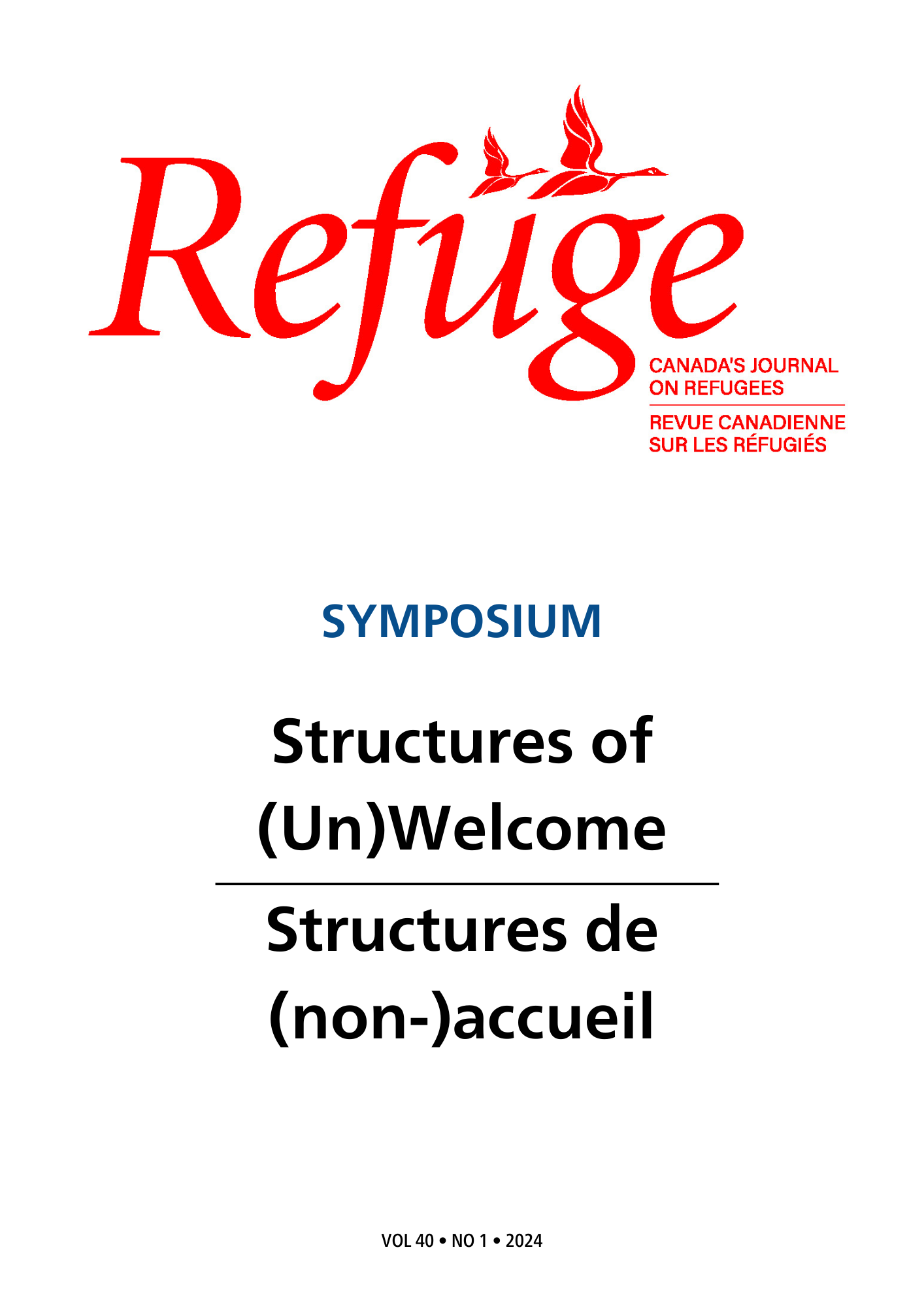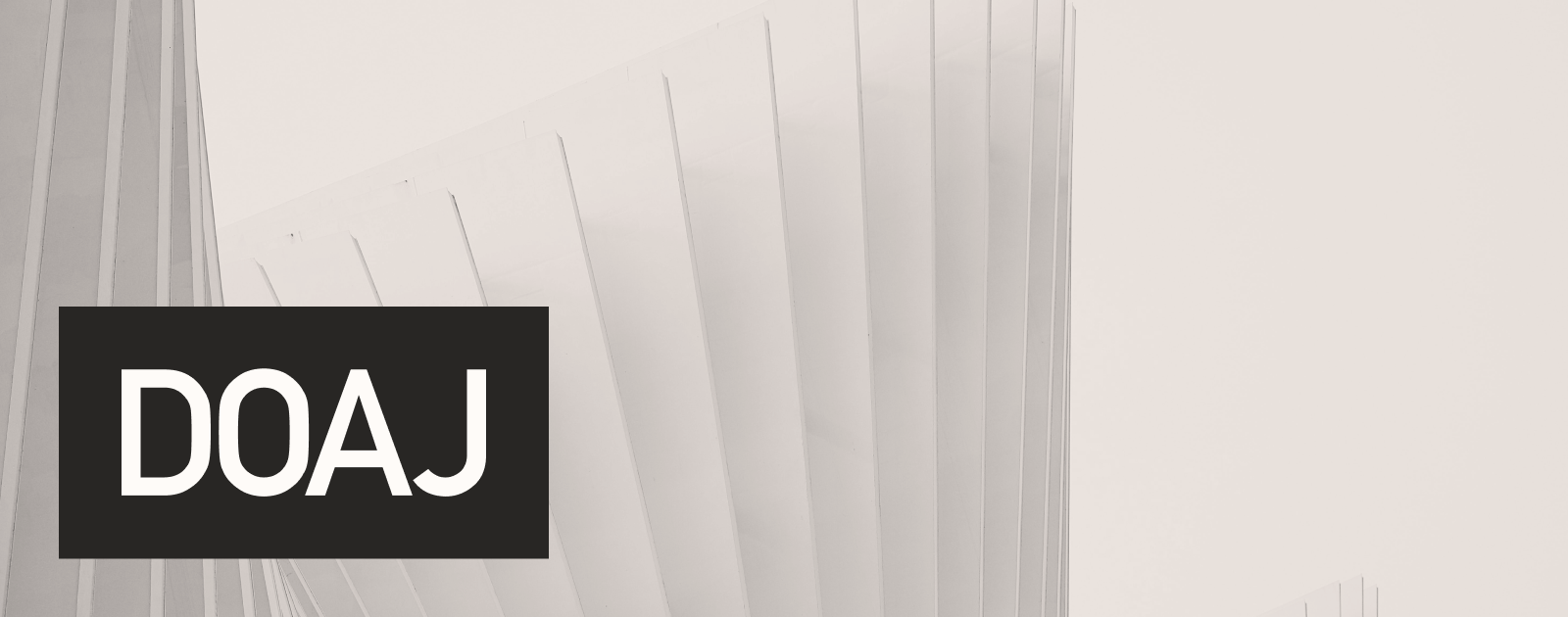“There Is No Safe Place in This Plant”: Refugee Workers in Canadian Meatpacking and the Limits of Permanent Legal Status
DOI:
https://doi.org/10.25071/1920-7336.41131Keywords:
Refugees, COVID-19, meatpacking, precarious work, legal status, CanadaAbstract
Following spring 2020’s deadly COVID-19 outbreaks in the Alberta meatpacking industry, we conducted research with meatpackers who were formerly resettled refugees and now Canadian permanent residents (PRs) or Canadian citizens. Research with temporary foreign workers often promotes permanent legal status as a solution to poor conditions of precarious work in Canada, but even with permanent immigration status, former refugees experienced a large gap between their rights as “guaranteed” by the state through their PR status and their daily work in meatpacking plants in rural Alberta. Work in the plants is dangerous, dirty, and difficult, and employees found it difficult to enact their rights as workers. Access to adequate breaks, sick days, and other mandated requirements was reported to be contested and contingent. Former refugees working in this sector experience unexpected “unfreedom.”
Metrics
References
Agahi, E. (2020, April 29). COVID-19 cases reported at 2 more B.C. poultry plants. CTV News. https://bc.ctvnews.ca/covid-19-cases-reported-at-2-more-b-c-poultry-plants-1.4917372
Arendt, H. (1951). The origins of totalitarianism. Harcourt, Brace.
Barnetson, B., & Matsunaga-Turnbull, J. (2018, April 27). Safer by design: How Alberta can improve workplace safety. Parkland Institute. https://www.parklandinstitute.ca/safer_by_design
Blaze Baum, K., Tait, C., & Tavia G. (2020, May 3). How Cargill became the site of Canada’s largest single outbreak of COVID-19. The Globe and Mail. https://www.theglobeandmail.com/business/article-how-cargill-became-the-site-of-canadas-largest-single-outbreak-of/
Bragg, B., & Hyndman, J. (2022). Family matters: Navigating the intentional precarity of racialized migrant and refugee workers in Canadian meatpacking. Canadian Ethnic Studies, 54(3), 9–31. https://doi.org/10.1353/ces.2022.0023 DOI: https://doi.org/10.1353/ces.2022.0023
Broadway, M. J. (2013). The world “meats” Canada: Meatpacking’s role in the cultural transformation of Brooks, Alberta. The American Geographical Society’s Focus on Geography, 56(2), 47–53. https://doi.org/10.1111/foge.12011 DOI: https://doi.org/10.1111/foge.12011
Carrillo, I. R., & Ipsen, A. (2021). Worksites as sacrifice zones: Structural precarity and COVID-19 in U.S. meatpacking. Sociological Perspectives, 64(5), 726–746. https://doi.org/10.1177/07311214211012025 DOI: https://doi.org/10.1177/07311214211012025
CBC News. (2020, May 4). “I am so, so sad”: Husband, friends of Cargill worker who died from COVID-19 honour her in memorial. https://www.cbc.ca/news/canada/calgary/memorial-worker-cargill-hiep-bui-covid-death-alberta-1.5554765
CBC News. (2022, May 3). Alberta union questions “shocking change” to Canada’s temporary foreign worker program. https://www.cbc.ca/news/canada/calgary/temporary-foreign-workers-alberta-union-meat-packing-plants-1.6438904
Cedillo, L., Lippel, K., & Nakache, D. (2019). Factors influencing the health and safety of temporary foreign workers in skilled and low-skilled occupations in Canada. New Solutions: A Journal of Environmental and Occupational Health Policy, 29(3), 422–458. https://doi.org/10.1177/1048291119867757 DOI: https://doi.org/10.1177/1048291119867757
Charlebois, S., & Summan, A. (2014). Abattoirs, meat processing and managerial challenges. International Journal of Rural Management, 10(1), 1–20. https://doi.org/10.1177/0973005214526504 DOI: https://doi.org/10.1177/0973005214526504
Climenhaga, D. (1989a, October 12). New beef plant running at near capacity. Calgary Herald, p. F1.
Climenhaga, D. (1989b, December 14). Beef packer showdown. Calgary Herald, p. F1.
Climenhaga, D. (1990, January 9). Cargill dismisses claims of low pay. Calgary Herald, p. C1.
Cranford, C. J., Vosko, L. F., & Zukewich, N. (2003). The gender of precarious employment in Canada. Relations industrielles / Industrial Relations, 58(3), 454–482. https://doi.org/10.7202/007495ar DOI: https://doi.org/10.7202/007495ar
Cybulski, H. (1988, March 26). Alberta’s goal to keep beef business here. Calgary Herald, p. F3.
Dryden, J. (2020, April 19). What led to Alberta’s biggest outbreak? Cargill meat plant’s hundreds of COVID-19 cases. CBC News. https://www.cbc.ca/news/canada/calgary/cargill-alberta-covid-19-deena-hinshaw-1.5537377
Food Processing Skills Canada. (2019). Securing Canada’s meat workforce: Real challenges. Practical solutions. Fresh perspectives. https://fpsc-ctac.com/wp-content/uploads/2020/03/exec-summary-canadian-meat-and-poultry-lmi-final-report.pdf
Foster, J. (2016). Solidarity on the TransCanada: The role of immigrant activism and innovative union tactics in the 2005 Lakeside Packers strike. Labour (Halifax), 78, 197–218. https://doi.org/10.1353/llt.2016.0056 DOI: https://doi.org/10.1353/llt.2016.0056
Fudge, J., & Vosko, L. (2001). Gender, segmentation and the standard employment relationship in Canadian labour law and policy. Economic and Industrial Democracy, 22, 271–310. https://doi.org/10.1177/0143831X01222005 DOI: https://doi.org/10.1177/0143831X01222005
Goldring, L., & Landolt, P. (2022). From illegalised migrant toward permanent resident: Assembling precarious legal status trajectories and differential inclusion in Canada. Journal of Ethnic and Migration Studies, 48(1), 33–52. https://doi.org/10.1080/1369183X.2020.1866978 DOI: https://doi.org/10.1080/1369183X.2020.1866978
Government of Alberta. (2022). Occupational health and safety and the internal responsibility system. https://open.alberta.ca/dataset/f2c9f55e-6ac7-40d7-b237-350c3579d455/resource/7b936e14-b1cc-4b70-9386-63d7f5714bb7/download/lbr-li051-internal-responsibility-system-2022-04.pdf
Government of Alberta. (2023). Guide to OHS: Workers. https://open.alberta.ca/dataset/89491b5c-eef1-481f-8771-b0f471cdb577/resource/6b00d320-120f-45dc-8c1e-6c8cb6b59735/download/jend-ohsorp-li008-guide-to-ohs-workers-2023-03.pdf
Hira-Friesen, P. (2018). Immigrants and precarious work in Canada: Trends, 2006–2012. Journal of International Migration and Integration, 19(1), 35–37. https://doi.org/10.1007/s12134-017-0518-0 DOI: https://doi.org/10.1007/s12134-017-0518-0
Kosny, A., Yanar, B., Begum, M., Al-khooly, D., Premji, S., Lay, M. A., & Smith, P. M. (2019). Safe employment integration of recent immigrants and refugees. Journal of International Migration and Integration, 21(3), 807–827. https://doi.org/10.1007/s12134-019-00685-w DOI: https://doi.org/10.1007/s12134-019-00685-w
Krahn, H., Derwing, T., Mulder, M., & Wilkinson, L. (2000). Educated and underemployed: Refugee integration into the Canadian labour market. Journal of International Migration and Integration / Revue de l’integration et de la migration internationale, 1(1), 59–84. https://doi.org/10.1007/s12134-000-1008-2 DOI: https://doi.org/10.1007/s12134-000-1008-2
Landolt, P., & Goldring, L. (2013a). The conditionality of legal status and rights: Conceptualize precarious non-citizenship in Canada. In L. Goldring & P. Landolt (Eds.), Producing and negotiating non-citizenship: Precarious legal status in Canada (pp. 3–27). University of Toronto Press. https://www.jstor.org/stable/10.3138/j.ctt2ttkpx.7 DOI: https://doi.org/10.3138/9781442663862
Landolt, P., & Goldring, L. (2013b). The social production of non-citizenship: The consequences of intersecting trajectories of precarious legal status and precarious work. In L. Goldring & P. Landolt (Eds.), Producing and negotiating non-citizenship: Precarious legal status in Canada (pp. 154–174). University of Toronto Press. https://www.jstor.org/stable/10.3138/j.ctt2ttkpx.14 DOI: https://doi.org/10.3138/9781442663862-012
Landolt, P., & Goldring, L. (2015). Assembling noncitizenship through the work of conditionality. Citizenship Studies, 19(8), 853–869. https://doi.org/10.1080/13621025.2015.1110280 DOI: https://doi.org/10.1080/13621025.2015.1110280
Lewchuk, W. (2013). The limits of voice: Are workers afraid to express their health and safety rights? Osgoode Hall Law Journal, 50(4), 789–812. https://doi.org/10.60082/2817-5069.1001 DOI: https://doi.org/10.60082/2817-5069.1001
Lewchuk, W., Clarke, M., & de Wolff, A. (2008). Working without commitments: Precarious employment and health. Work, Employment & Society, 22(3), 387–406. https://doi.org/10.1177/0950017008093477 DOI: https://doi.org/10.1177/0950017008093477
MacLachlan, I. (2001). Kill and chill: Restructuring Canada’s beef commodity chain. University of Toronto Press. https://doi.org/10.3138/9781442676503 DOI: https://doi.org/10.3138/9781442676503
McLaughlin, J., & Hennebry, J. (2013). Pathways to precarity: Structural vulnerabilities and lived consequences for migrant farmworkers in Canada. In L. Goldring & P. Landolt (Eds.), Producing and negotiating non-citizenship: Precarious legal status in Canada (pp. 175–194). University of Toronto Press. https://www.jstor.org/stable/10.3138/j.ctt2ttkpx.15 DOI: https://doi.org/10.3138/9781442663862-013
Miraftab, F. (2016). Global heartland: Displaced labor, transnational lives and local placemaking. Indiana University Press. https://www.jstor.org/stable/j.ctt19893gq
Mofina, R. (1988, March 17). Getty asked to reconsider meat plant site. Calgary Herald, p. D8.
Nakache, D., & Kinoshita, P. J. (2010). The Canadian Temporary Foreign Worker Program: Do short-term economic needs prevail over human rights concerns? (IRPP Study No. 5). https://ssrn.com/abstract=1617255
Ng, E. (2021). COVID-19 deaths among immigrants: Evidence from the early months of the pandemic. Statistics Canada. https://www150.statcan.gc.ca/n1/pub/45-28-0001/2021001/article/00017-eng.htm
Nguyen, V. (2019). Refugeetude: When does a refugee stop being a refugee? Social Text, 37(2), 109–131. https://doi.org/10.1215/01642472-7371003 DOI: https://doi.org/10.1215/01642472-7371003
Oreopoulos, P., & Dechief, D. (2012). Why do some employers prefer to interview Matthew, but not Samir? New evidence from Toronto, Montreal, and Vancouver. https://doi.org/10.2139/ssrn.2018047 DOI: https://doi.org/10.2139/ssrn.2018047
Premji, S., & Lewchuk, W. (2013). Racialized and gendered disparities in occupational exposures among Chinese and white workers in Toronto. Ethnicity & Health, 19(5), 512–528. https://doi.org/10.1080/13557858.2013.848843 DOI: https://doi.org/10.1080/13557858.2013.848843
Premji, S., Messing, K., & Lippel, K. (2008). Broken English, broken bones? Mechanisms linking language proficiency and occupational health in a Montreal garment factory. International Journal of Health Services, 38(1), 1–19. https://doi.org/10.2190/HS.38.1.a DOI: https://doi.org/10.2190/HS.38.1.a
Ribas, V. (2016). On the line: Slaughterhouse lives and the making of the New South (1st ed.). University of California Press. https://www.jstor.org/stable/10.1525/j.ctt19633j7
Rosove, J. (2021, February 26). 3 COVID-19 deaths now linked to Red Deer’s Olymel plant. CTV News. https://edmonton.ctvnews.ca/3-covid-19-deaths-now-linked-to-red-deer-s-olymel-plant-1.5326246
Rusnell, C., & Russell, J. (2021, March 30). Union group says documents show Alberta government prioritized Cargill plant operation over worker Safety. CBC News. https://www.cbc.ca/news/canada/edmonton/union-group-says-documents-show-alberta-government-prioritized-cargill-plant-operation-over-worker-safety-1.5968428
Schuler, D. (1990a, January 7). Alberta beef barons fight the chopping block.Calgary Herald, p. C1.
Schuler, D. (1990b, January 10). New XL meatpackers’ union says “let’s talk.” Calgary Herald, p. B1.
Smith, P., & Mustard, C. (2010). The unequal distribution of occupational health and safety risks among immigrants to Canada compared to Canadian-born labour market participants: 1993–2005. Safety Science, 48(10), 1296–1303. https://doi.org/10.1016/j.ssci.2010.03.020 DOI: https://doi.org/10.1016/j.ssci.2010.03.020
Statistics Canada. (2016). Data tables, 2016 census: Table 98-400-X2016361. https://www150.statcan.gc.ca/n1/en/catalogue/98-400-X2016361
Strauss, K., & McGrath, S. (2017). Temporary migration, precarious employment and unfree labour relations: Exploring the “continuum of exploitation” in Canada’s temporary foreign worker program. Geoforum, 78, 199–208. https://doi.org/10.1016/j.geoforum.2016.01.008 DOI: https://doi.org/10.1016/j.geoforum.2016.01.008
Stull, D. D., & Broadway, M. J. (2013). Slaughterhouse blues: The meat and poultry industry in North America (2nd ed.). Cengage.
Stull, D. D., Broadway, M.J., & Griffith, D. (1995). Any way you cut it: Meat processing and small-town America. University Press of Kansas.
Sweetman, A., McDonald, J. T., & Hawthorne, L. (2015). Occupational regulation and foreign qualification recognition: an overview. Canadian Public Policy, 41(suppl. 1), S1–S13. https://doi.org/10.3138/cpp.41.s1.s1 DOI: https://doi.org/10.3138/cpp.41.s1.s1
Vosko, L. F. 2005. Precarious employment: Understanding labour market insecurity in Canada. McGill-Queen’s University Press. https://www.jstor.org/stable/j.cttq495n DOI: https://doi.org/10.1515/9780773585195
Wilkinson, L., & Garcea, J. (2017). Labor market integration of refugees in Canada: A mixed record? https://migrationpolicy.org/sites/default/files/publications/TCM-Asylum_Canada-FINAL.pdf
Downloads
Published
How to Cite
Issue
Section
License
Copyright (c) 2024 Bronwyn Bragg, Jennifer Hyndman

This work is licensed under a Creative Commons Attribution-NonCommercial 4.0 International License.
Refuge authors retain the copyright over their work, and license it to the general public under the Creative Commons Attribution-Non Commercial License International (CC BY-NC 4.0). This license allows for non-commercial use, reproduction and adaption of the material in any medium or format, with proper attribution. For general information on Creative Commons licences, visit the Creative Commons site. For the CC BY-NC 4.0 license, review the human readable summary.








